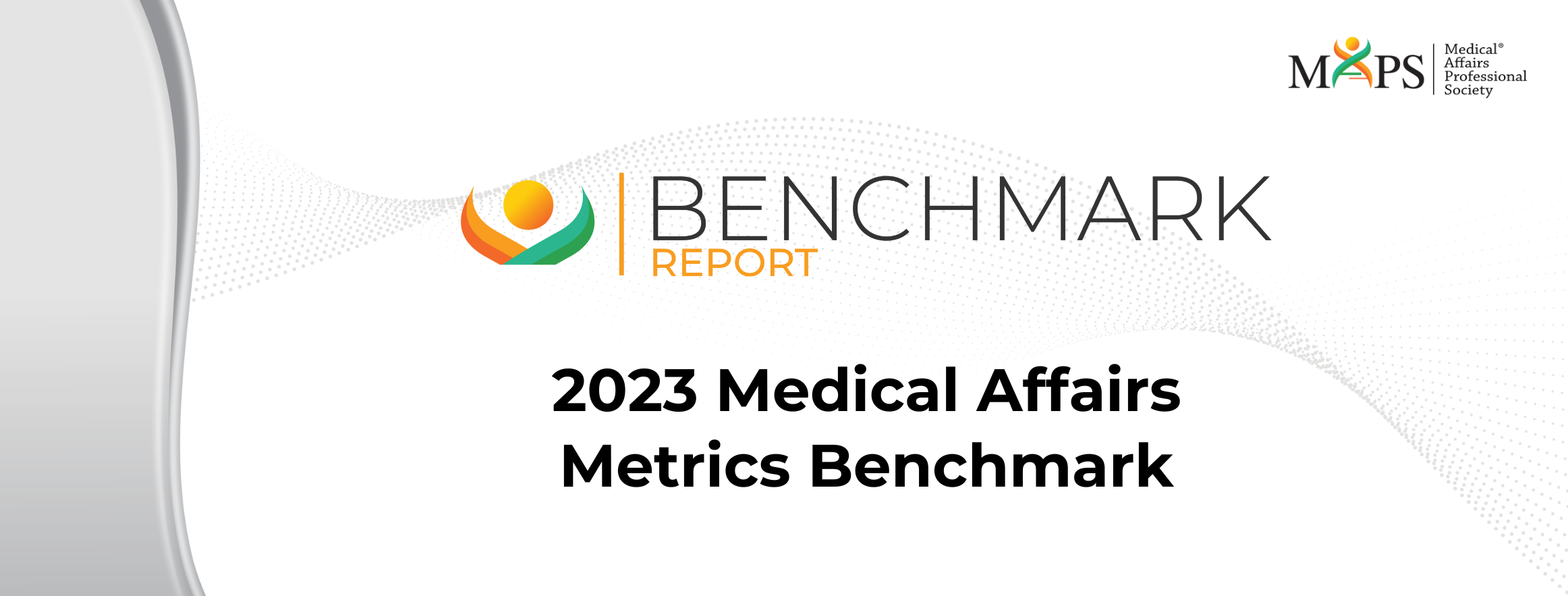Introduction
The Medical Affairs Professional Society (MAPS) is pleased to share our 2023 Medical Metrics Benchmarking Report. This Report is based on findings from 51 leading organizations representing the Pharmaceutical, Biotech, and Medical and Diagnostic Device sectors regarding capturing metrics and developing insights to influence the Medical and enterprise strategy.
Survey Design and Analysis: MAPS would like to thank Boston Consulting Group for moderating the Ambassador Alliance session during the MAPS 2023 Global Annual Meeting in Nashville, TN, and Tim Mikhelashvili, CEO & Co-Founder, Amedea Pharma, Inc. for developing and executing the survey.
Respondents: MAPS selected 51 representatives from 30 Pharma companies, 10 Biotech Companies, 9 Medical Devices companies and 2 Medical Diagnostics companies. All responses were anonymous, meaning the self-reported industry type reflected in the baseline data overview may not align with the breakdown of the invitees.



